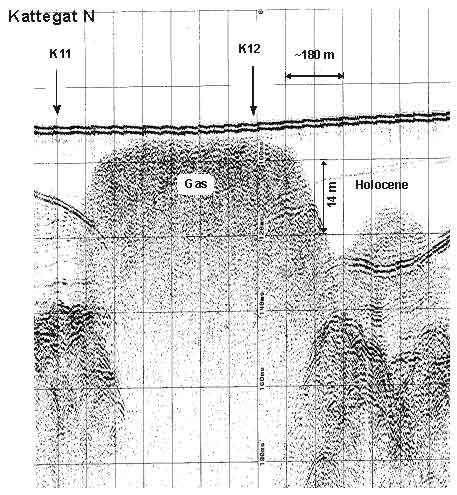 | Detail of a seismic profile in the northern Kattegat area off Frederikshavn (Denmark) illustrating the relationship between free gas and thickness of Holocene fine grained sediments. |
The geophysical survey of gas bubbles in coastal sediments combined with detailed biogeochemical studies is a potential approach to monitor the long-term organic load on the sea floor. The conceptual background is as follows.
There is a close relationship between the sub-surface depth of sulfate penetration, the sulfate gradient and sulfate flux down to the sulfate-methane interface, and the rate of methane oxidation1. As there is a stoichiometric coupling between sulfate and methane fluxes at the methane-sulfate interface, the methane gradient (corrected for the known ratio between sulfate and methane diffusion coefficients) is a mirror image of the sulfate gradient2. The methane gradient extends with depth to reach a point where the methane partial pressure exceeds the ambient hydrostatic pressure.
This is the upper boundary of gas bubble occurrence, which can be detected by acoustic profiling. The idea is thus, that the acoustic data with appropriate correction for water depth define the sub-surface position of the transitional sulfate-methane zone. This position in turn defines the sulfate and methane fluxes and thereby allows a calculation of the methane oxidation rates. This model concept will be calibrated by concurrent sediment coring, analysis of chemical pore water gradients and process rates in different sediment settings.
Literature:
back to top